UPDATE 28 JANUARY, 2019, 6:44 PM (PST)
Twitter user @HillardHouseDan referred me to a gamefaqs post at gamefaqs.gamespot.com/boards/179835-resident-evil-2/77419853 that has a work-around for this issue. That post claims that disabling HDR (High Dynamic Range) in the PS4's video settings will allow you to stream and capture Resident Evil 2 footage. Commentor Jon had also posted the same work-around just as I was loading up RE2 to test it. So thanks readers!
I had actually come across this post last night, but had dismissed it because it was specifically about "Share Play" and not about streaming. I have been streaming Red Dead Redemption II for two months with HDR enabled without any problem, so it didn't even occur to me to test that setting.
Besides, the message was telling me that the scene was "blocked", so I had assumed that Capcom had blocked it as a "spoiler" section. Games in the past have done this for screens in which players enter email accounts, passwords, credit card numbers, or other sensitive information (which is the only acceptable use of blocking share functionality!). But Atlus had also recently blocked streaming of Persona 5 in order to prevent spoilers from leaking onto the internet. I was assuming that Capcom was doing the same thing. Atlus had patched Persona 5 to remove the streaming block for after about a week.
So, long story short: If you disable HDR on the PS4's video settings, you should be able to stream Resident Evil 2. You'll be playing at lower resolution, and with less color range, but it'll be playable and streamable. I guess I'll have to chalk this one up to a bug for now? Maybe Capcom will fix it with a patch. I can't imagine that they had deliberately blocked HDR or 4k streaming, but left non-HDR and regular HD enabled.
So pending any other setbacks, I do expect to play Resident Evil 2 this week, and will hopefully have a review out in a couple weeks. I'm leaving the rest of this post intact for posterity. Some of the points about fair use and blocking functionality of the console are still valid for situations like Persona 5, so maybe this blog will serve as a cautionary tale for any publishers or developers who do try to pull something like this deliberately.
UPDATE 26 February, 2019:
I have a full review up for the game now. I have also adapted that review into a video critique on YouTube:
I have adapted my review into a video critique on YouTube.
I was really looking forward to this remake of RE2.
After having to wait all of Saturday night for Resident Evil 2 remake to download and install on my PS4 (and playing Red Dead Redemption 2 to pass the time), I tried booting up the game on Sunday and played 15 minutes, only to find that the entire game is blocked from streaming. Even the built-in "capture" functionality (of the last 15 minutes of gameplay) of the PS4 console is disabled! I didn't even know games on the console could disable the built-in capture.
This realization sent me into a rabbit-hole of digging through the internet to find out if there was a work-around. I couldn't find one. Apparently, only the PS4 version of the game suffers from this problem. Players on Steam and XBox One do not seem to have any issues streaming.
I was very exciting to play this game. I really loved the REmake that was released on PSN a couple years ago, and I've been looking forward to an "RE2make" ever since. Resident Evil VII was also pretty damned good, and a return to form that made me optimistic about the series moving forward. But the game being blocked from streaming and capture put a damper on the experience that makes me not want to play the game. Basically, my night -- and my weekend -- were ruined by this petty decision from Capcom (and the fact that Sony even allows this bullshit on their platform).
This makes blogging about the game much harder
Why is this such a big deal? Why can't I just play the game and not stream it to Twitch? Well, the reason is that I use the streaming and capture functionality to get screenshots (and occasionally video) for use on this blog. After playing the game, I go through the archived footage to get relevant screenshots for blogs, strategy guides, analyses, or whatever I happen to be writing about the game -- all of which is legally protected under fair use!
It isn't just streaming that's disabled; even the capture function built into the PS4 is disabled!
I could maybe have lived without the Twitch broadcast, as I usually prefer to save important footage using the PS4's built-in capture function. The captured footage is much higher quality than what is saved by Twitch, and so it's essential for getting good screenshots of action segments. But the PS4 only saves the last 15 minutes of footage, so I have to make sure to remember to capture any video that I feel I'll need. I use the Twitch stream as a backup in case I forget.
The principle of the thing
More importantly, however, is the principle of the thing... [More]
00efb30e-9feb-440d-94b1-199058646dcc|1|5.0
Tags:Resident Evil 2, Resident Evil, remake, Capcom, Sony, PlayStation 4, PSN, troubleshooting, work-around, refund, share, game capture, Twitch, screenshot, stream, broadcast, copyright, fair use, Steam, PC
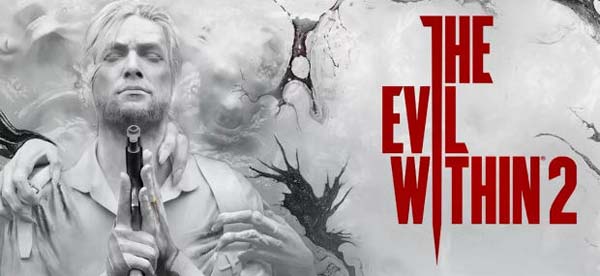
Okay, I said I would give up on Shinji Mikami after the first Evil Within game, but here I am giving that IP a second chance. I had heard that the expansions for Evil Within were actually pretty good, and that they even made the base game better by filling in some of the narrative gaps. But I was so furious with the base game that I sure as hell was not going to shell out more money for DLCs. If they were that integral to the core game, then they should have been included with the core game. Now that my furor over the original has faded a bit, I was hearing that the sequel is also much better than the original game and leans more heavily in the horror camp than the action shooter camp. I was dismissive of the game's announcement, and I was skeptical of the claims that the sequel was actually good, so I picked up a [relatively] cheap used copy off eBay so that I could give it a chance over the Halloween week without necessarily giving any more money to Bethesda.
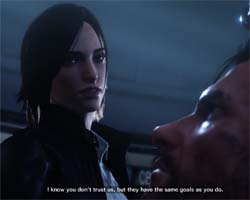
I feel like I missed something...
Maybe I should've played the DLC?
Besides, Shinji Mikami isn't the director this time around. Instead the sequel is directed by John Johanas, who was the director of the [supposedly] good DLC expansion packs. The first game actually did have some good ideas and set pieces within, so maybe a different directorial approach could bring those ideas out to their full potential?
A more focused package
To Johanas' credit, the game, as a whole, definitely has a more "unified" presentation. The first game felt very scattershot with regard to how it wanted the player to play. It's early chapters (which were also the most enjoyable parts of the game) were focused mostly on stealth, with a few pursuit and escape moments thrown in. It was slow, somewhat atmospheric, and built incredible tension. But those mechanics were quickly dropped in favor of shooting gallery set pieces, constant scripted ambushes, set piece boss encounters, and frantic, funhouse-ish trap / puzzle rooms. The sequel, thankfully, is much more focused. I didn't feel like I was wasting my resources by putting points into Sebastian's stealth skills (a skill tree that was completely absent from the previous game), as you can actually continue to use them over the course of the entire game. Sure, there's still scripted ambushes and puzzle rooms, but the focus is much more firmly planted in sneaking around, exploring the environments, and generally avoiding detection.
Unfortunately, there's still a bit too much of a focus on frenzied action. It detracts significantly from any sort of horror or tension that the game might be trying to build up. The autosaves are fairly generous (even though there are also manual save points in each of the game's safe houses), so enemies come in hordes, hit very hard, and deaths are going to happen. Chapter 3 basically completely desensitized me to death and put me in the habit of just standing up and letting the monsters kill me if I ever screwed up the stealth.
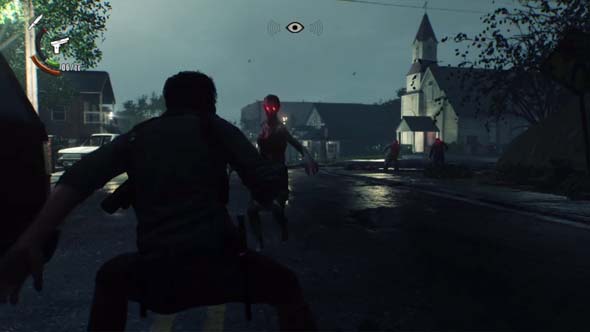
The early combat encounters are not gentle, as they put you up against hordes of enemies.
There's a greater focus on open-ended exploration this time around, and Chapter 3 is the first open map that the player is free to explore. There's basically two main paths through it: the hard one and the easy one. The easy path is basically a straight line due north from where you start, but the game throws some curveball objectives at you that basically encourage you to try the other paths that end up being much harder. You're told about weapon caches and NPCs that you're supposed to try to save. One such weapon is the crossbow, which is actually a pretty necessary tool (because, you know, every game has to have a crossbow). It's right off to the side of where you start, but picking it up can easily lead you down a much harder path to your actual mission objective... [More]
a80e28ec-25a4-48ed-8bdc-50264cab70ac|1|4.0
Tags:The Evil Within, The Evil Within 2, Bethesda, Tango Gameworks, survival horror, horror, action, shooter, open world, sandbox, stealth, zombies, mental institution, virtual reality, psychopath, Sebastian Castellanos, eBay, John Johanas, Shinji Mikami, Resident Evil, Silent Hill
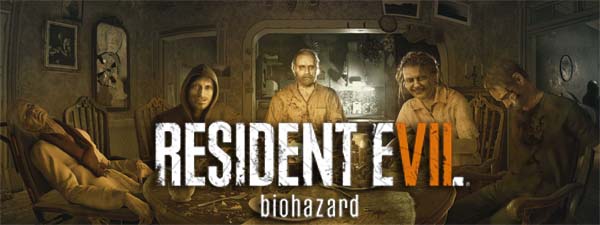
It's been a long time since I've given a crap about Resident Evil. I loved the classic Resident Evil games. The Play Station original is a foundational game for me, and jump-started my interest in horror and the macabre. I felt like the series jumped the shark with Resident Evil 4, however, and my interest in the series tanked with its abandonment of horror in favor of schlockey action-shooter gameplay. I played through Resident Evil 5's co-op with a friend, but didn't really enjoy myself, and after playing the abysmal demo for RE6, I skipped that one entirely.
So I was genuinely excited by Resident Evil VII: Biohazard. The popularity of first-person horror games, and the phenomenon that was P.T. / Silent Hills (not to mention the success of Resident Evil REmastered on Steam) obviously seems to have kicked Capcom in the butt and reminded them that there is still an audience for genuine horror games - an audience that mainstream gaming has neglected for most of the last decade. I'm not sure if development of REVII started as a response to P.T., or if it was already in the works following the success of games like Amnesia, Outlast, and Alien: Isolation. Either way, it's good to see major publishers embracing the genre again.
The family's new - but familiar - mansion
This new Resident Evil really does go back to the franchise's roots. The early hours of the game actually feel a lot like a combination of the original Resident Evil and Resident Evil 3: Nemesis, but updated with a first-person camera and a lot of modern horror contrivances. Long-time fans of the series will recognize the safe rooms and item-boxes. The classic health status indicator is now part of a watch on the character's wrist that you can see whenever you pull up your inventory. There's a foyer with a balcony. Doors are locked by silly, esoteric puzzle mechanisms that require themed keys, crests or various other stand-ins for keys. There's even a booby-trapped shotgun to tease you at the start of the game. Some of these elements of design feel appropriate, while other ham-fisted call-backs admittedly feel like the developers were trying too hard.
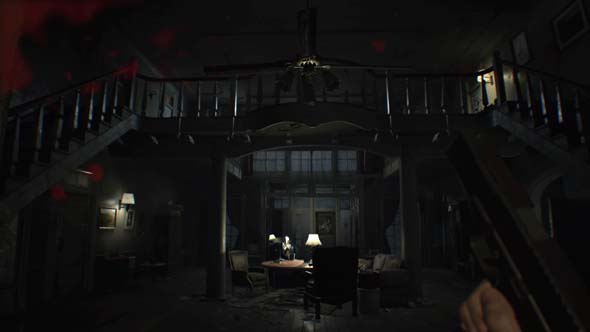
The mansion is new, but has many call-backs to the first game.
The map is well-designed, with its claustrophobic hallways, shortcuts, and lots of visual detail. Lighting is excellent, though the game is a bit too dark at the recommended brightness level (at least without a flashlight), and it becomes washed-out at higher brightness settings. Sound design is also quite exceptional, with the game giving great audio feedback (especially for the pursing stalkers). I also like a lot of the little details, particularly how using a key to unlock a door takes a small amount of time, during which you are vulnerable.
The family also makes for some excellent antagonists, especially compared to the likes of stupid, campy villains like Albert Wesker and Salazar. These villains have a lot of character, and there's enough detail in the mansion to give a sense of who these people might have been before they went off the deep end: the collectible football bobbleheads, for example. And on top of that, they are genuinely disturbing and threatening, and the whole game would probably be scary enough if you just spent the whole time avoiding them and trying to escape their murder house.
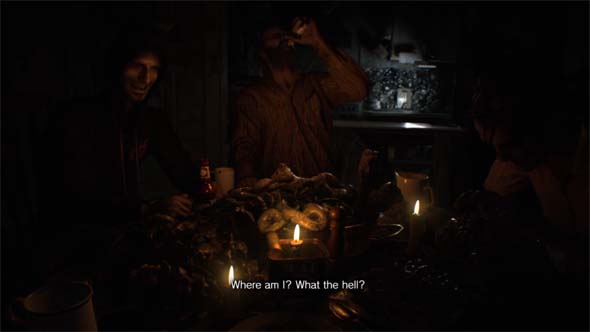
The family makes for genuinely disturbing villains that put RE's earlier villains to shame.
The save system is kind of an odd hybrid of the classic save system and more modern checkpoint systems. The logistics of the classic system have been scaled back, as you no longer require a consumable item (ink ribbon) to manually save (at least not on the default difficulty). But the game will also checkpoint you at certain points, and it maintains a single autosave slot with your checkpointed progress. So if you die to one of the obnoxiously-hard bosses, you don't have to go back a whole hour to your last manual save; instead, you get to restart at the most recent checkpoint.
However, the manual saves still have value, because Biohazard is structurally very similar to the original Resident Evil - both superficially and in terms of gameplay... [More]
a4e07563-fcc1-4e63-88fa-f5d8f517792b|1|5.0
Tags:Resident Evil, Biohazard, Resident Evil 7: Biohazard, Capcom, horror, survival horror, shooter, first person, inventory, resource management, mansion, autosave, save system, puzzle, logistics
Last time, I discussed what I perceive as a problem in the way that most open world games (specifically, sandbox games) design their maps and use the space that the maps offer - or fail to use that space, to be more specific. So many open world maps end up feeling less like actually playing the game, and more like a convoluted mission-select and collectible checklist screens. This problem is especially bad in the Ubisoft model of design, and is also a problem (to a lesser extent) in Bethesda's open worlds. Due to the popularity of these developers' franchises, many other developers have been cloning these styles of games to one extent or the other, to the point at which Ubisoft's open world model seems to be the go-to template for any developer trying to make an open world game. These games aren't necessarily bad. They just aren't very good at making the space of their maps feel meaningful in its own right.
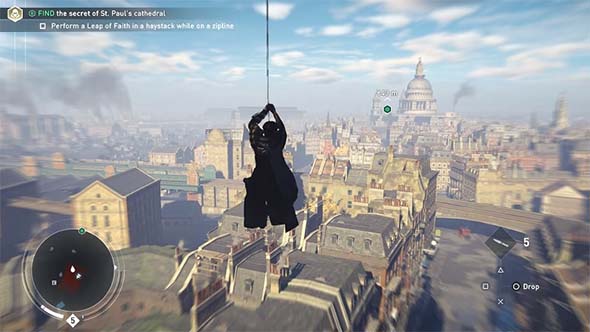
Many open world games have large, expansive maps that mostly feel empty and pointless,
as the player rushes through them simply to get to the next map marker or checklist item.
But now that I've established what I see as a problem, I want to focus on positive feedback. In this discussion, I'm going to look at a handful of games that should serve as inspirations for would-be open world developers. Ironically, some of these games aren't even open world games, but they still pose valuable lessons for how games that are open world could better use their game spaces. That isn't to say that the games discussed here are perfect. In fact, many of them have their own major flaws. But each of them has some element of design that utilizes the actual game map as a component of active play, rather than just a space in which game sequences exist. First, let's take a look at a game that was re-made recently, and use it as a "before and after" case study of map design... [More]
75d0658b-0278-43f3-a9e5-d3df3d01939d|4|4.3
Tags:open world, map, traversal, travel, cartography, geography, narrative, ludonarrative, ludonarrative dissonance, quest, vehicle, driving, racing, exploration, wasteland, survival, resources, Ubisoft, Bethesda, Resident Evil, Metal Gear Solid V: the Phantom Pain, Assassin's Creed, The Elder Scrolls, Skyrim, The Witcher 3, Grand Theft Auto, Grand Theft Auto V, Grand Theft Auto: San Andreas, Shadow of Mordor, Fallout, Fallout: New Vegas, Wasteland 2, Mad Max, Miasmata, Assassin's Creed IV: Black Flag, Burnout: Paradise, Shadow of the Colossus, Dark Souls
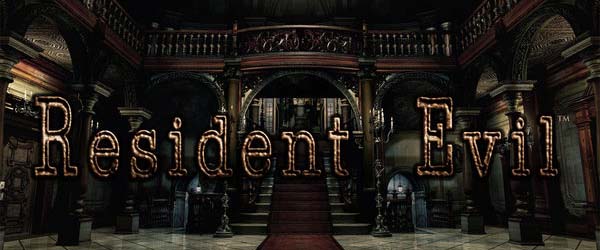
Not having a GameCube meant that I unfortunately missed out on some pretty high-quality games. Probably the most notable ones were Eternal Darkness and the remake of Resident Evil, neither of which, by itself, was enough to sell me on a console. I've since been able to play through a friend's copy of Eternal Darkness, and I had started on Resident Evil, but never got around to finishing it. When the HD remaster showed up on PSN, I was hesitant to buy it, since I knew that I could just play it on my friend's GameCube eventually.
Best of both worlds at the tip of your thumb
However, something in the previews really intrigued me. And that was the compromise that Capcom found for the never-ending conflict between the tank-style controls of the original PSX game and the analog control of newer games. Since I grew up with Resident Evil, Silent Hill, and other survival horror and similar adventure games, I've never had a problem with tank controls. They tend to be the lesser evil when dealing with static camera angles that change unpredictably (as in Resident Evil), and they are perfectly serviceable for behind-the-back or overhead cameras (as in the outdoor areas of Silent Hill). This ensures that the controls remain consistent during camera angle changes, since they are always relevant to the character rather than the camera.
But apparently, some people hate that control paradigm. They criticize it for making the characters feel too slow and lumbering, and that it lacks precision. The controls have oft been cited as one of the reasons for Resident Evil's declining popularity after Resident Evil 2, and supposedly ditching them was a major factor in the "renaissance" that was [supposedly] Resident Evil 4. But let me remind you that Resident Evil 4 had the exact same controls, and the character was just as slow and lumbering (if not moreso). The only difference was that the camera was moved to behind-the-back, and the gameplay switched to an action shooter rather than a more adventure-puzzle kind of game. So really, your problem was never with the controls...
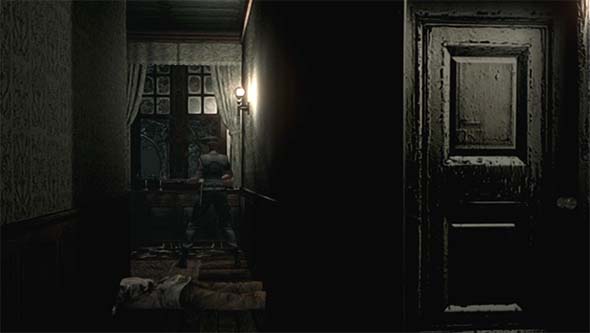
The original Resident Evil was criticized for how its controls and camera lead to frequent blind corners,
wasted ammunition, and cheap kills. The critics were right, but it wasn't game-breaking...
Regardless, analog control has its own baggage train of problems. Pressing the stick in one direction can cause the character to make sudden changes of direction if the camera suddenly changes. This can be mostly avoided by locking the character's movement as long as the player doesn't release or rotate the stick - and the HD Remaster does implement this. But this still leads to sudden turn-arounds when the player needs to move the character around a corner, since you sometimes have to move the stick to the exact opposite direction that you were pressing. And in cases in which the camera angle changes at the point where a change of direction is required to go around a corner or navigate an obstacle (which happens often), then the character can easily get lost in a cycle of spinning around between the two camera zones.
So there is no perfect solution to the problem of static cameras, but I tend to prefer the tank method due to its guarantee of consistency - even at the cost of some slow turning speeds. In any case, advocates of either paradigm should find exactly what they want in this remaster, since both configurations are implemented in the remastered game's default control scheme! Capcom's clever (and elegant) solution was to simply map the tank controls to the directional pad, while leaving the free analog movement on the analog stick. Players are, thus, free to alternate between whichever control they prefer without even having to go into a menu to change it. You can even alternate between them, on the fly, in the heat of the action if the situation warrants it, because I can definitely see how the analog movement could work well in some of the [rare] larger, open areas of the map (particularly for boss fights).
It's OK to hate these red-headed step-zombies
Most of the changes introduced in the GameCube remake serve to add further challenge. The most prominent display of this is the new "Crimson Head" zombie mechanic. If you kill a zombie and didn't manage to get lucky enough to blow its head off, you must burn its body in order to prevent it from resurrecting later in the game as a more dangerous "Crimson Head". These red-headed zombies are faster and more damaging than their precursor form. They can rapidly run across a room and grab you before you even realize they are there. They are also very well-tutorialized, since most players will probably encounter their first Crimson Head while attempting to retrieve the Armor Key from the hallway trapped with suits of armor on rails. The previous hallway includes a dead body that (if you didn't go out of your way to burn previously) will resurrect at this time. This hall has a system of mirrors in place that allow a tremendous degree of visibility from virtually every camera angle, meaning that whichever door you enter from, you'll have an opportunity to see the Crimson Head coming after you. It's a frantic and frightening moment!
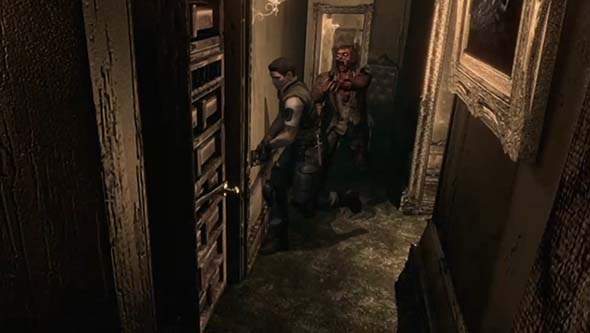
Bodies that you don't burn will resurrect as faster, more deadly "Crimson Heads"
that are difficult to avoid and require a second investment in resources to defeat.
Almost any zombie in the game can potentially turn into this more dangerous form. Destroying their head with a lucky shot or burning their bodies are the only ways to permanently ensure that they can't attack you... [More]
bedbfed9-e92f-45b6-b083-1b57db8977fc|1|5.0
Tags:Resident Evil, HD, remaster, remake, port, Capcom, survival horror, Jill Valentine, Chris Redfield, Albert Wesker, mansion, zombie, save, save system, tank controls, checkpoint, typewriter, ink ribbon, resource management, puzzle, logistics, GameCube, b-movie, Shinji Mikami
|

| 12 | | | | | | | 60 | | 11 | | | | | | | 55 | | 10 | | | | | | | 50 | | 09 | | | | | | | 45 | | 08 | | | | | | | 40 | | 07 | | | | | | | 35 | | 06 | | | | | | | 30 | | 05 | | | | | | | 25 | | 04 | | | | | | | 20 | | 03 | | | | | | | 15 | | 02 | | | | | | | 10 | | 01 | | | | | | | 05 |
|